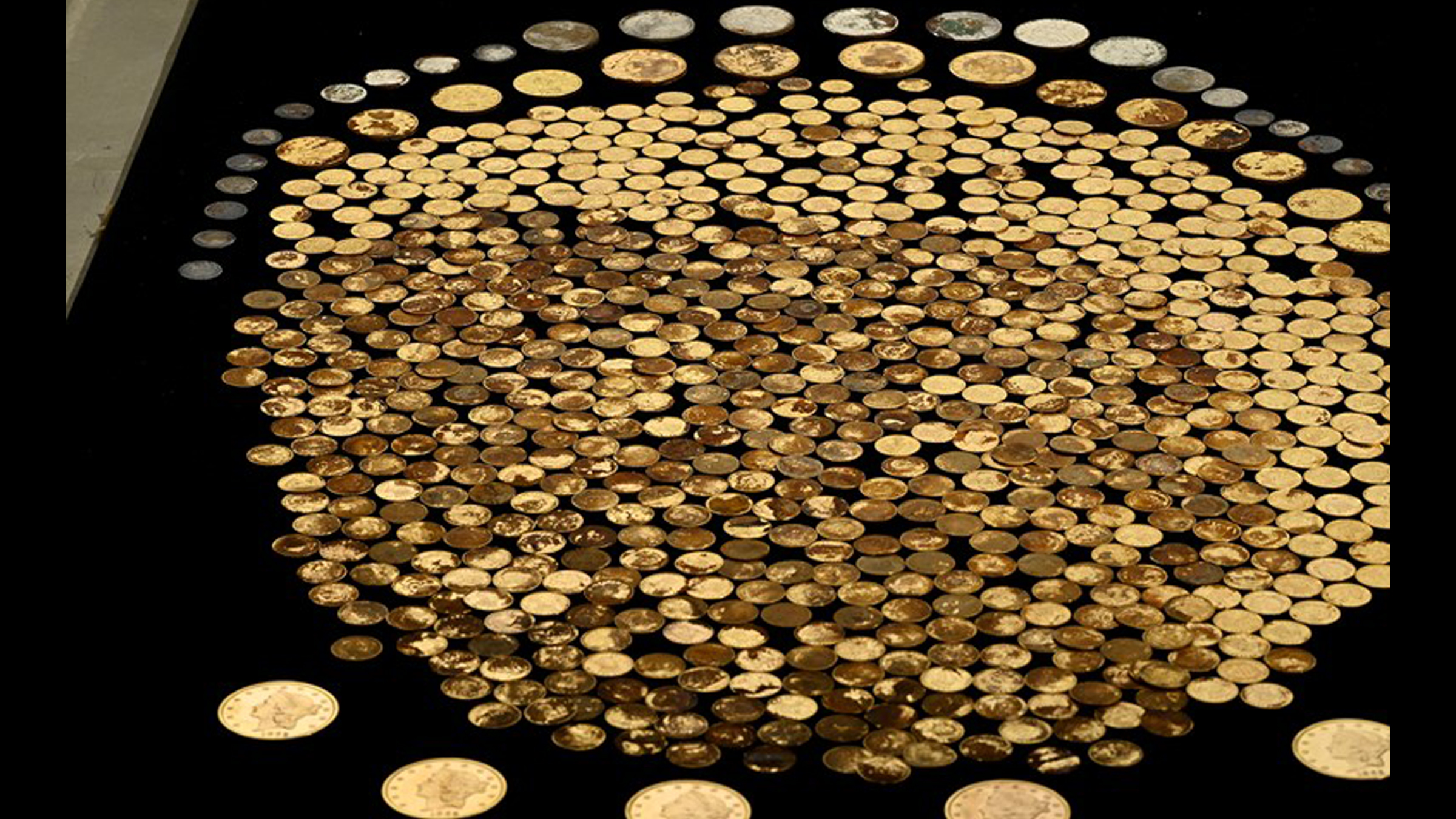Kentucky man finds over 700 Civil War-era coins buried in his cornfield
A man unearthed a huge hoard of Civil War-era gold and silver coins on his Kentucky farm.

A Kentucky man got the surprise of his life while digging in his field earlier this year: a cache of over 700 coins from the American Civil War era.
The "Great Kentucky Hoard" includes hundreds of U.S. gold pieces dating to between 1840 and 1863, in addition to a handful of silver coins. In a short video, the man who discovered the hoard — whose identity and specific location have not been revealed to the public — says, "This is the most insane thing ever: Those are all $1 gold coins, $20 gold coins, $10 gold coins," as he aims his camera at the artifacts tumbling out of the dirt.
According to the Numismatic Guaranty Co. (NGC), which certified the coins' authenticity, and GovMint, where the coins were sold, 95% of the hoard is composed of gold dollars, along with 20 $10 Liberty coins and eight $20 Liberty coins. The rarest is the 1863-P $20 1-ounce gold Liberty coin. Just one of these coins can go for six figures at auction, and the Great Kentucky Hoard boasts 18 of them. NGC's website notes that the $20 Liberty coin, which circulated from 1850 to 1907, was minted by the Treasury Department after gold was discovered in California. The $20 Liberty coins in the hoard are even rarer because they do not include "In God We Trust," which was added in 1866 after the end of the Civil War.
Potentially more important, though, is what the hoard can tell us about America's history during an extremely tumultuous period.
Related: Archaeologists find unexploded artillery shell under Gettysburg battlefield
Ryan McNutt, a conflict archaeologist at Georgia Southern University who has heard about but not seen the hoard, told Live Science in an email that "given the time period and the location in Kentucky, which was neutral at the time, it is entirely possible this was buried in advance of Confederate John Hunt Morgan's June to July 1863 raid."
Many wealthy Kentuckians are rumored to have buried huge sums of money to prevent it from being stolen by the Confederacy. James Langstaff left a letter saying he had buried $20,000 in coins on his property in Paducah, William Pettit buried $80,000 worth of gold coins near Lexington, and Confederate soldiers quarantined for measles reportedly stole payroll and hid it in a cave in Cumberland Gap. None of these caches has ever been recovered.
Get the world’s most fascinating discoveries delivered straight to your inbox.
Considering the hoard coins are federal currency, McNutt said, it may be the result of a Kentuckian's dealings with the federal government — "dealings that it would be wise to conceal from a Confederate raiding party." Many Americans affected by the Civil War "became experienced with hiding goods and valuables," he said.
Most concentrations of historical artifacts found on private land end up going to market or being collected without archaeological consultation, according to McNutt. "As a conflict archaeologist, I find this loss of information particularly frustrating," he said. Hoards have an incredible amount of information about the person who collected the objects, offering archaeologists insight into a brief window in time.
Historical finds like these on private land in the U.S. do not need to be reported to an archaeologist. But McNutt, who has developed close relationships with landowners, believes that education and outreach are key to learning more about these rare coin caches.
"It is entirely up to the landowner," McNutt said, but not engaging with an archaeologist means "it's a snapshot of the past, lost forever."

Kristina Killgrove is a staff writer at Live Science with a focus on archaeology and paleoanthropology news. Her articles have also appeared in venues such as Forbes, Smithsonian, and Mental Floss. Kristina holds a Ph.D. in biological anthropology and an M.A. in classical archaeology from the University of North Carolina, as well as a B.A. in Latin from the University of Virginia, and she was formerly a university professor and researcher. She has received awards from the Society for American Archaeology and the American Anthropological Association for her science writing.
